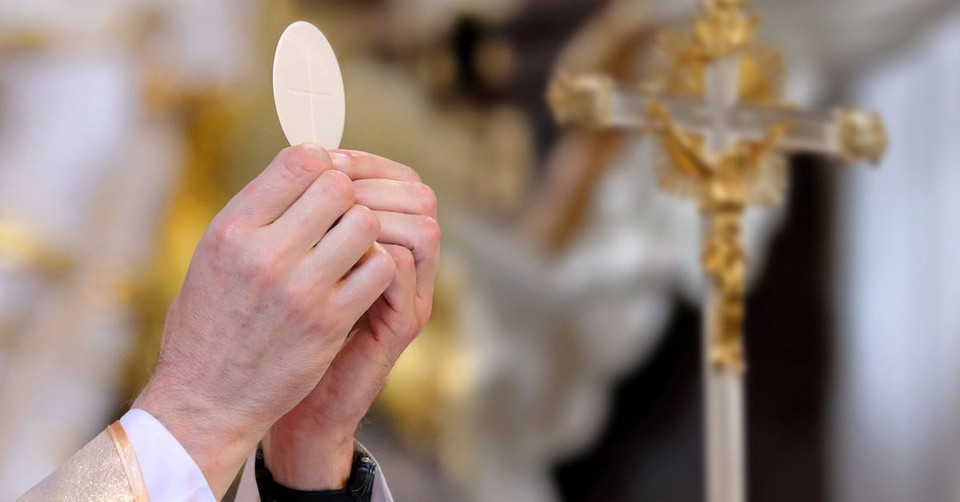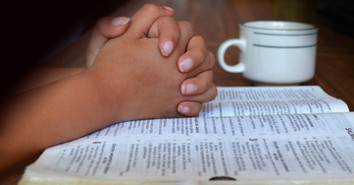Is Catholicism a Branch of Christianity?

The Roman Catholic Church is an ancient religious institution boasting over a billion members worldwide. As such, it is the largest Christian ecclesiastical body in the world. Because of this alone, it is important to accurately understand the Roman Catholic Church’s history and beliefs.
Where did the Roman Catholic Church come from?
The Church at Rome, which would later develop into what we know as Roman Catholicism, was started in the apostolic times (circa AD 30-95). Although we do not have records of the first Christian missionaries to Rome, it is evident that a church existed there as the New Testament Scriptures were being written. St. Paul himself wrote an epistle to the church in Rome, and the Book of Acts records some of his dealings there. St. Clement of Rome (ca. 35-99), St. Ignatius of Antioch (35-108), and St. Irenaeus of Lyons (130-202) all speak as if St. Simon Peter ministered in Rome, serving as its first bishop (the term “bishop” is an English contraction of the biblical Greek word episkopos, often translated as “overseer” in modern Protestant translations of the New Testament). Tertullian (ca. 155-240) reported that Peter died in the same place as Paul, and it is commonly believed that Paul was martyred in Rome. Since both Peter and Paul were such important and prominent apostles, Rome became an important pilgrimage site for Christians who wanted to visit their graves and worship near where they were buried.
Because of the tie to Peter and Paul (as well as the fact that Rome was the capital city of the western portion of the Roman Empire), the bishop of Rome became the most prominent of the western Christian ecclesiastical leaders, and he received deference from church leaders from other parts of the Empire as well. After Christianity was legalized and the Church continued to fight heresies in various councils and synods, the Pope and his emissaries weighed in on very important doctrinal issues. The Church at Rome kept meticulous records and was often further removed from the theological innovations and conflicts that erupted in the East in important cities such as Alexandria, Antioch, and Constantinople. Therefore, her witness on theological matters carried much weight, and the Roman church was given the greatest prerogative of honor, as declared in the third canon of the First Council of Constantinople.
The Pope gained more influence and authority in his jurisdiction as the western Roman Empire continued to deteriorate and crumble. As the imperial structures and systems decayed and transformed, the western Church filled in the institutional power vacuum. Succeeding popes continued to make more ambitious claims to authority. This soured relations between western and eastern Christians.
The Great Schism of 1054
The Church was split in two by the Great Schism of 1054, dividing Christians between the western, Latin-speaking Roman Catholic Church and the eastern, Greek-speaking Eastern Orthodox Church. This schism was precipitated over two main doctrinal disagreements. One was obviously the role and authority of the Pope. The other was the filioque clause of the Nicene Creed. Western Catholics believe that the Holy Spirit proceeds from the Father and the Son, while Eastern Orthodox believe that the Holy Spirit proceeds only from the Father.
The Roman Catholic Church experienced another rupture about five hundred years later during the Reformations. The Protestant reformers (Lutherans, Anglicans, and the Reformed) and the Radical Reformers (Anabaptists) disagreed with the Pope and his allies over issues of authority, Scripture, soteriology (the doctrine of salvation), and sacramental theology (the doctrines surrounding Holy Baptism and Holy Communion). At the time, Protestants also fought to translate the liturgy and the Bible into the language of the people. In contrast, the Roman Catholic leadership maintained that both should remain in Latin.
Catholic vs. Protestant Biblical Canon
Roman Catholic Bibles contain all the books one would find in Protestant editions. However, Catholicism also recognizes the collection of books called the Apocrypha to be within the canon of Holy Scripture. Protestants, on the other hand, read these books only for examples of life and instruction of manners. You can read more about how the Bible was finalized in these articles:
- How Do We Know the Right Books Made it into the New Testament?
- Who Decided What Went into the Bible?
- What Is the Bible and Where Did it Come from?
Important Central Catholic Beliefs to Know.
Roman Catholics, the Eastern Orthodox, and Protestants share many core Christian beliefs, particularly with regard to the Trinity and the Incarnation, especially as they are addressed in the ancient ecumenical councils. That being said, faithful Roman Catholics hold to several key distinctions.
One is the belief that the Roman Catholic Church is the one true church. This connects with the view that the Pope occupies the episcopal seat of Peter and is the sole vicar of Christ upon earth. This vicarious status holds several ramifications for Roman Catholic views of pastoral authority, politics, sacramental ministry, and Scripture.
Roman Catholic theologians have defended the universality of their church’s doctrine by several means. One approach is to hold to an ancient oral tradition that existed alongside the written tradition of Holy Scripture. Both the oral and written tradition coexisted together, with the oral tradition giving the definitive interpretation and application of biblical texts (such as Matthew 16:18). They believe, in and of themselves, the Holy Scriptures are not a sufficient guide and authority with regard to salvation. In the 1800s, Cardinal John Henry Newman (a high-profile convert from Anglicanism) argued for the “development of doctrine,” in which the Holy Ghost infallibly guided and guides the Roman Catholic Church toward dogmatic truth.
Roman Catholics believe in purgatory, a state in the afterlife in which a Christian’s sins are purged away, typically through suffering. This includes punishment for sins committed in one’s earthly life. It may be helpful for Protestants to understand purgatory as sanctification extended even after death, until one is truly transformed and glorified in perfect holiness. All those in Purgatory will reach heaven eventually. They do not remain there permanently, and they are never sent to the Lake of Fire.
Roman Catholics also hold to the idea of the “treasury of merit.” Roughly speaking, this is a sort of “bank” of grace, in which the merits of Jesus Christ and His holy saints are stored and can be accessed for the benefit of other Christians. It is inexhaustible due to Christ’s own infinite merit. Roman Catholics will pray to Christ or any variety of saints, beseeching them for such benefits. It is important to remember that Roman Catholics do not understand themselves to be worshipping the saints; they seek to honor them (dulia) while recognizing God alone as worthy of divine worship (latria). Protestants are typically skeptical of this distinction. One of the major controversies during the Protestant Reformation on the Pope’s claim to special access to the treasury of merit. In particular, the popes claimed that one could obtain indulgences from the Church, which could reduce the temporal punishment due for sins committed on earth. This meant shortening one’s time in Purgatory. These indulgences could be obtained for oneself or a loved one. What is more, the popes allowed for the sale and purchasing of indulgences, typically to help raise funds for their magnificent buildings and other projects. This enraged many theologians and pastors, including Martin Luther. Indulgences are still issued today, even though they are not commercialized as they were in the late medieval era thanks to reforms made in the Counter-Reformation.
With some exceptions, the Roman Catholic Church requires that its clergy be celibate. This has been a mandatory policy since the Fourth Lateran Council (1215). The Fourth Lateran Council also mandated private oral confession for sin to a priest at least once a year (as well as participating in Holy Communion annually).
That same council prescribed transubstantiation as the authoritative understanding of the Eucharist. Transubstantiation is the belief that, when a priest says the words of institution, the bread and wine in Holy Communion changes in substance to become the body and blood of Christ. The elements are no longer bread and wine; those features are simply accidents. The essence of these elements has been transformed.
This belief serves as the basis and justification for the practice of Adoration. This is where Catholics show special honor to consecrated bread and wine, whether through genuflection or other means. It is also a Catholic practice to put a consecrated Communion wafer into a special display case called a “monstrance,” where it can be adored devotionally in a chapel or used in religious processions, particularly during the festival of Corpus Christi.
Other major Roman Catholic dogmas include a belief in the immaculate conception of the Virgin Mary and her bodily Assumption. While all Christians believe Jesus had an immaculate conception--that he was born free from original sin inherited from Adam--Roman Catholics insist on Mary also having the similarly miraculous conception as a point of orthodoxy. Moreover, they also believe her body was assumed--taken up--into heaven at the end of her earthly life. Her corpse is not to be found on earth. Alongside Eastern Orthodox Christians and some Protestants, Catholics believe that Mary remained a perpetual virgin even after Jesus Christ’s birth.
What is the Catechism of the Catholic Church (CCC)?
A catechism is a document that summarizes or exposits Christian doctrine, typically for the purposes of instruction. The CCC is a fairly recent catechism released in 1992 under Pope John Paul II. It is a helpful summary of Roman Catholic beliefs and a go-to resource for understanding current, official Roman Catholic doctrine. It has gone through a few updates and revisions. For instance, in 2018, Pope Francis revised the paragraph on capital punishment, which was met with controversy. You can read the catechism here.
How leadership in the Catholic Church works
Like other Christian churches, the Roman Catholic Church has an episcopal model for church leadership, which recognizes three orders of pastoral ministry and leadership: bishops, priests (the English contraction of presbyter or “elder”), and deacons. Bishops, in particular, are entrusted with authority and oversight, particularly over other clergymen. The Roman Catholic hierarchy is especially centralized. Of course, the Pope is the highest-ranking bishop.
Roman Catholics hold to papal infallibility, a position which became official in 1870. In this view, the pope is infallible in matters of doctrine and morals whenever he speaks ex cathedra. This actually happens quite rarely and does not mean that Catholics think that everything the pope says is without error. Only when he speaks and teaches as the universal shepherd of God’s church is he considered infallible by Catholics.
What's the difference between Roman Catholic and Catholic?
“Catholic” literally means “respect for the whole” and, in theological contexts, refers to the universal Church—all Christians who are indeed part of Christ’s Body. Typically, the term was used to describe universally accepted Christian beliefs. “Roman Catholic” refers to a more particular Christian tradition and ecclesiastical body. Other things to know about the Roman Catholic Church:
- The Roman Catholic Church is known for its social stances, particularly with regard to the family. Abortion is forbidden, as is the use of artificial contraception. Married couples interested in family planning are encouraged to pursue Natural Family Planning (NFP).
- Roman Catholicism recognizes seven sacraments, which are important means of grace for the Christian life. Like Protestants, Catholics hold Baptism and the Eucharist as sacraments. Catholics also believe confirmation, reconciliation (penance), anointing of the sick, marriage, and ordination to be sacraments.
- Traditional Roman Catholic theology makes a distinction between mortal and venial sins. Venial sins are slight sins that do not damn one’s soul. Mortal sins are grave sins that separate one from God and result in a person ending up in Hell if not absolved before death.
- Like most other Christian traditions in history, Roman Catholicism allows for men and women to pursue monasticism. The Roman Catholic Church is home to several orders of monks, friars, nuns, and sisters. They minister in many important ways in the Church.
- The Roman Catholic Church has espoused a wide variety of political stances and approaches throughout history. The tone and tenor of official Roman Catholic documents can vary greatly depending on the time they were written. Sometimes, the Pope can make sweeping claims of political authority. At other times—including today—the Roman Catholic Church is more modest in its exercise and demand for civil power.
What should Protestants, Anabaptists, and Eastern Orthodox Christians think about Roman Catholicism? With regard to the Trinity, the Incarnation, and Christian morals, Roman Catholicism gets lots of big things right. With regard to doctrines of grace, salvation, and authority, it gets a lot of big things wrong and can give us an understanding of why early Protestant documents included “anti-Christ” language with regard to the Pope. Regardless, it behooves any Christian to know Roman Catholic beliefs and history, if for no other reason than the church’s size and influence.
What do you think? Is Catholicism best understood as a denomination of Christianity, or does it teach a fundamentally different gospel? Join the conversation on Crosswalk Forums!

This article is part of our Denomination Series, listing historical facts and theological information about different factions within and from the Christian religion. We provide these articles to help you understand the distinctions between denominations, including origin, leadership, doctrine, and beliefs. Explore the various characteristics of different denominations from our list below!
Catholic Church: History, Tradition & Beliefs
Jehovah's Witnesses & Their Beliefs
Mormons: The Church of Latter Day Saints & Their Beliefs
Baptist Church: History & Beliefs
Presbyterians: History & Beliefs
Mennonites & Their Beliefs
United Methodist Church: History & Beliefs
Seventh-Day Adventists & Their Beliefs
The Pentecostal Church: History & Beliefs
Lutheran History & Beliefs
Photo credit: ©Thinkstock/Wideonet

Originally published October 17, 2018.







